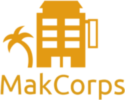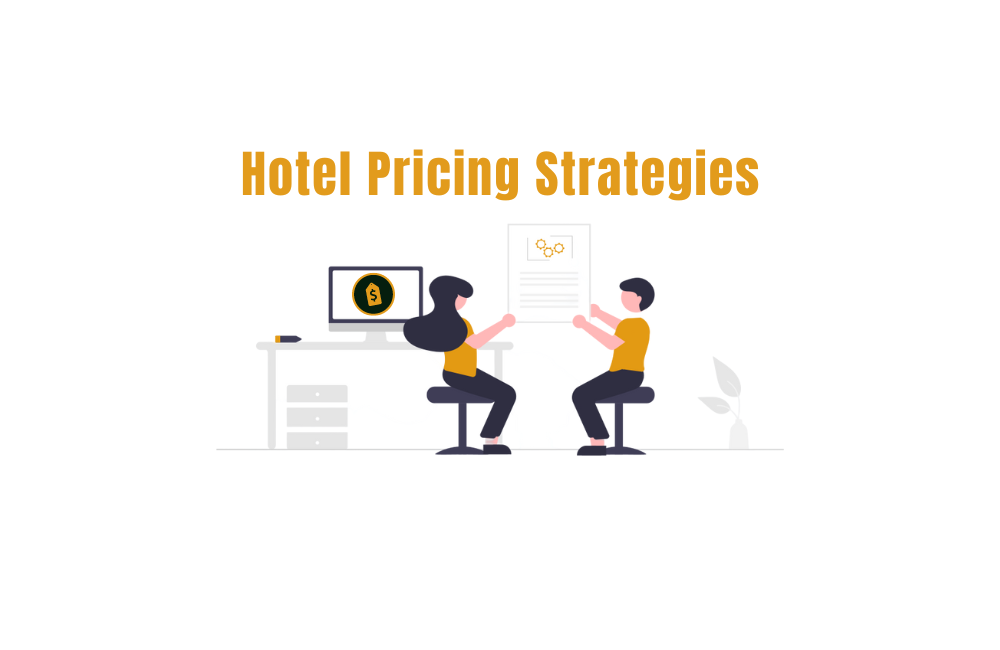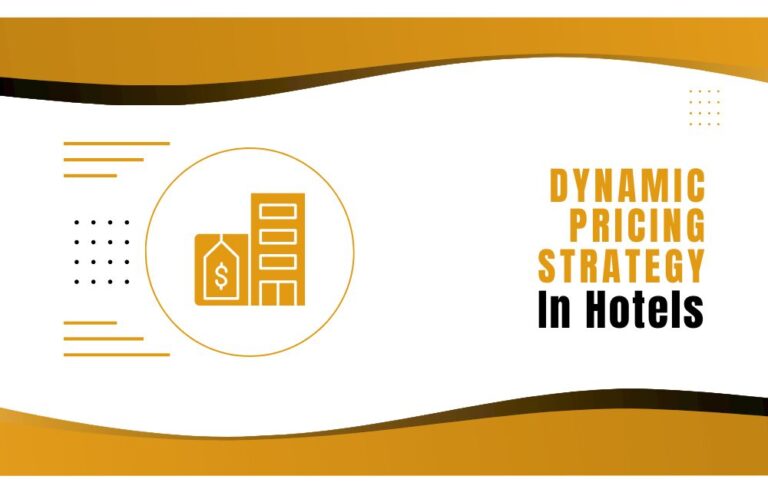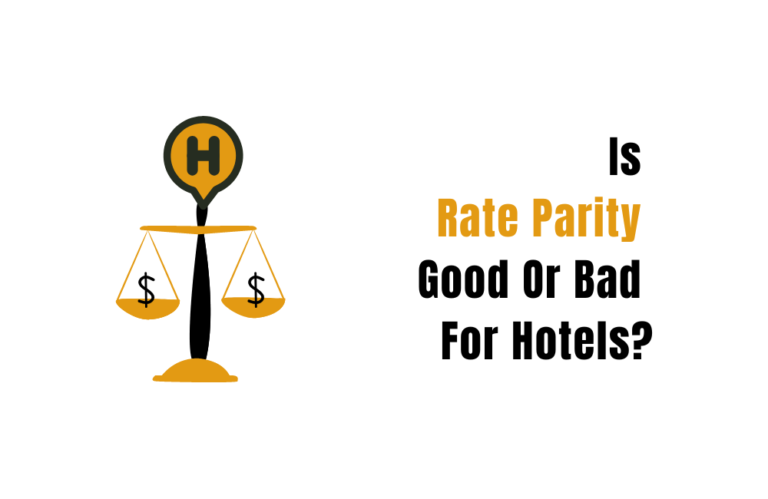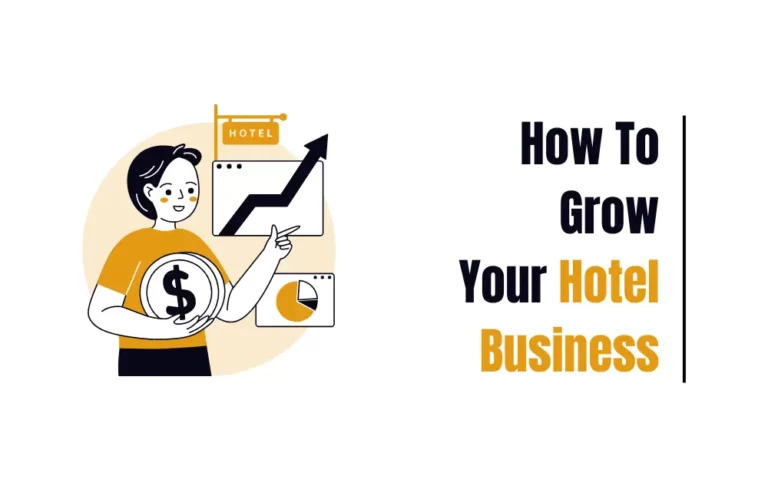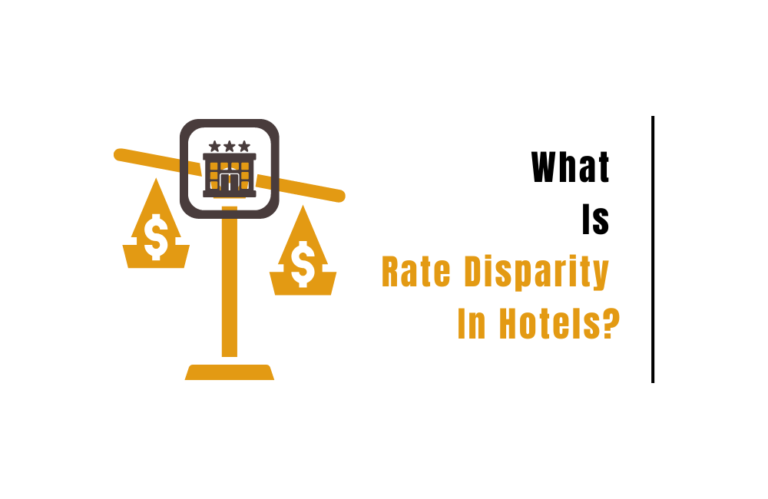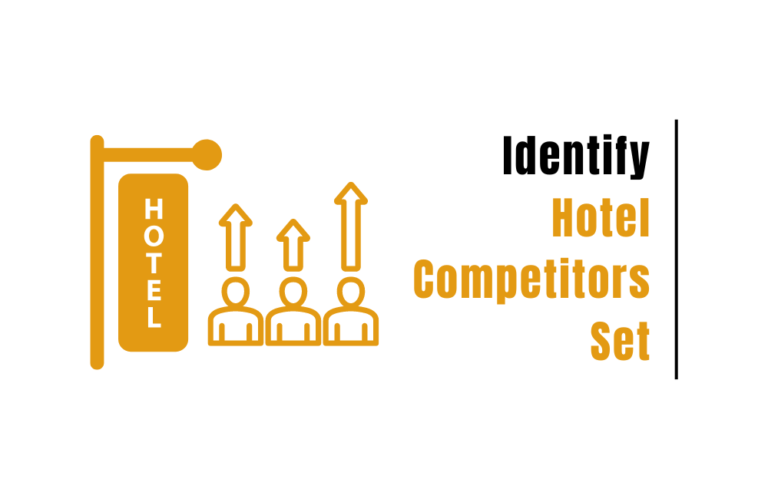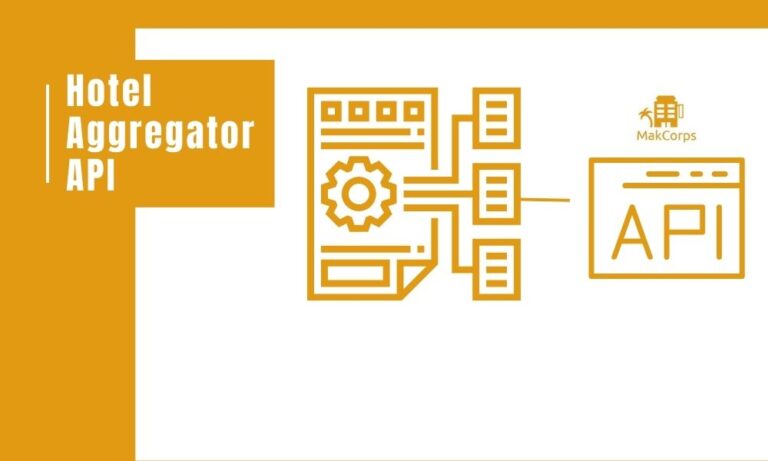12 Hotel Pricing Strategies To Boost Your Revenue in 2025
As a hotel owner, implementing effective pricing strategy can transform your property from merely surviving to thriving in a competitive market. If you’re exploring effective pricing strategies to enhance room sales at your hotel, this guide offers the insights you need.
In this blog, you will discover hotel pricing strategies, factors that influence them, and guide you through their practical implementation.
Let’s start with ensuring a solid foundation is in place.
Foundation for Effective Pricing Strategy
Before implementing any pricing strategy for your hotel, it’s crucial to lay a solid foundation.
This ensures that your pricing decisions are not only effective but also sustainable over time.
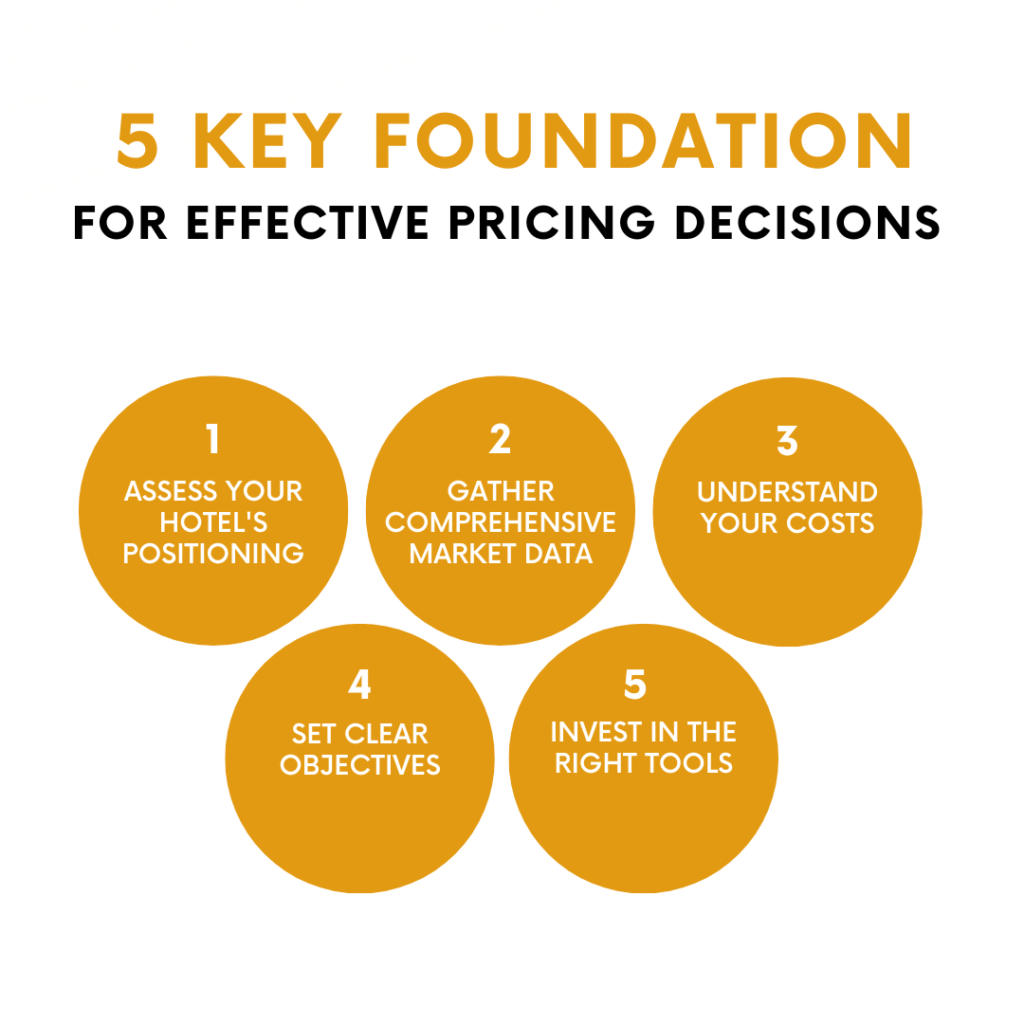
Here’s how you can prepare:
Assess Your Hotel’s Positioning: Understanding your hotel’s market position relative to competitors is vital. Evaluate your strengths, weaknesses, and unique offerings. Are you a luxury resort, a boutique hotel, or a budget-friendly stopover?
Gather Comprehensive Market Data: Collect data on market trends, competitor prices, and customer preferences. This data should include seasonal variations, economic factors affecting travel, and emerging market demands.
Understand Your Costs: A clear grasp of your operational costs is essential. No one wants to operate at loss. Knowing the minimum price point at which you break even will help in setting profitable room rates.
Set Clear Objectives: Think about it! What are your financial goals? Are you aiming to maximize occupancy, increase the average daily rate (ADR), or achieve a balance of both? Setting clear objectives will guide your pricing strategies and help measure their effectiveness.
Invest in the Right Tools: Consider investing in revenue management software that can automate data analysis and rate adjustments to provide valuable insights and free up time for other management tasks. Additionally, use tools like channel managers to optimize online presence and rates across platforms, hotel rate shopping tools to monitor market dynamics and competitor pricing, and forecasting tools to predict demand to guide pricing decisions. Together, these tools support strategic, data-driven pricing decisions in hotel management.
This preparation will support better financial outcomes with the pricing strategy you will implement.
What Are The Main Compliance Considerations for Hotel Pricing?
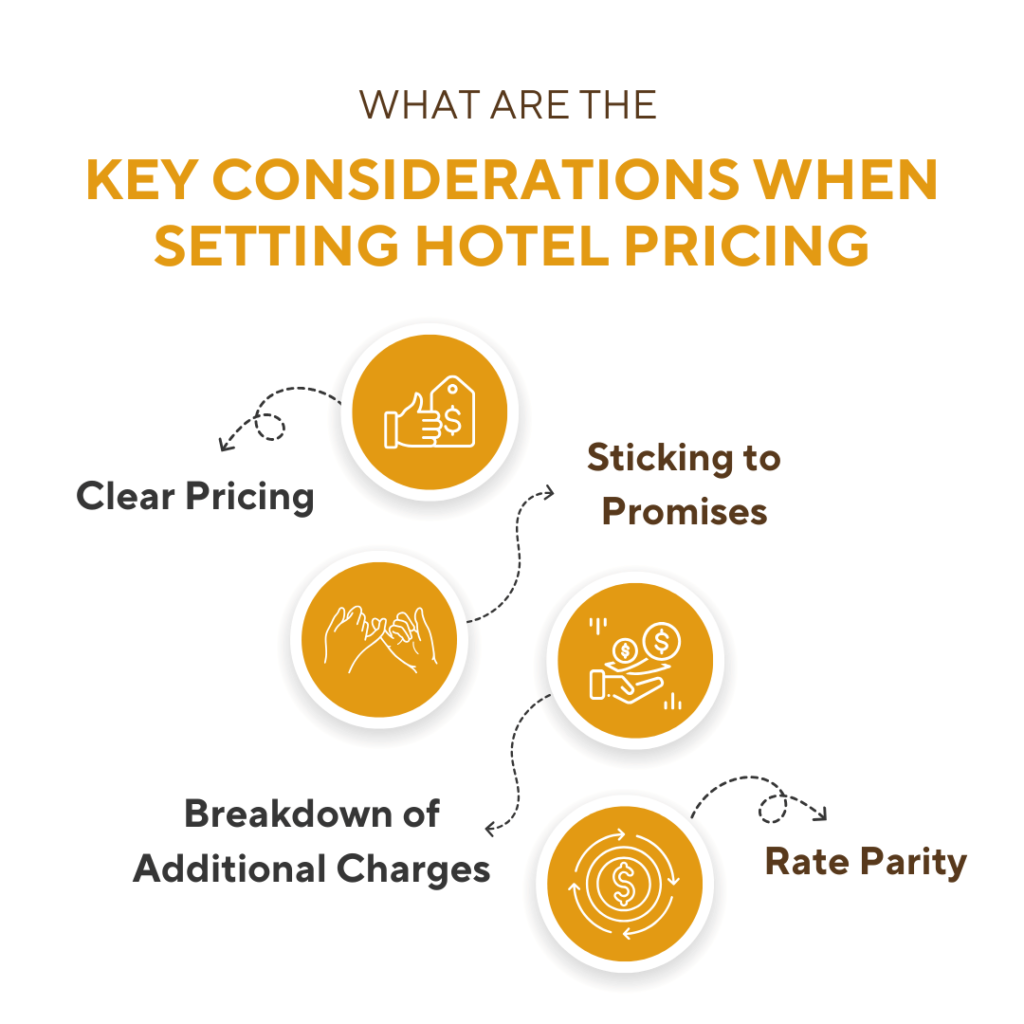
In the hotel industry, compliance with local laws and booking platform rules is essential.
While there isn’t a one-size-fits-all checklist, several fundamental regulations serve as best practices:
Clear Pricing: First up, be clear. Like, really clear. When a guest books a room, the price they see should be the price they pay. No surprises, no hidden fees — just happy guests and stellar reviews.
Sticking to Promises: Remember, whatever is promised in promotions and advertisements should be exactly what the guest receives to maintain transparency and trust.
Breakdown of Additional Charges: Clearly itemize any extra fees, such as local taxes or service charges, so guests understand what they are paying for. Whether it’s local taxes or service fees, make sure your guests know exactly what they’re paying for.
Rate Parity: Maintain consistent pricing across all booking channels. This standardization is not only often a requirement of online travel agencies (OTAs) but also builds guest confidence that they are receiving the best possible rate to enchance loyalty and encouraging direct bookings.
Setting these principles in motion before you jump into those complex pricing strategies will not only streamline your operations but also keep your guests coming back.
12 Room Rate Pricing Strategies
Pricing can determine the success or failure of a business. The hotel industry uses various pricing strategies, but not all yield the same results. We’ve identified 12 proven strategies that will remain effective in 2025 and beyond.
Take a quick look at the pricing strategies. If you want a deeper understanding, everything is explained below the table. Explore the strategies, their features, and benefits to see what works best for your business.
| Strategy | Description | Key Features/Benefits |
|---|---|---|
| 1. Competitors-Based Pricing | Adjust prices by monitoring competitors’ rates using tools like Makcorps Hotel Price API. | Real-time data, dynamic adjustments, aligns with market trends. |
| 2. Projection-Based Pricing | Use historical data and market trends (seasonality, events) to predict future pricing. | Data-driven decisions, aligns with demand fluctuations. |
| 3. Length-of-Stay Pricing | Offer discounts for longer stays (e.g., cheaper nightly rates for 7-night bookings). | Boosts occupancy, reduces operational costs, smooths demand. |
| 4. Rate-Parity Strategy | Keep room rates consistent across all channels (e.g., OTAs and direct bookings). | Builds customer trust, avoids price wars, maintains brand integrity. |
| 5. Segment-Based Pricing | Tailor prices for different customer groups (e.g., corporate vs. leisure travelers). | Maximizes revenue per segment, improves guest satisfaction. |
| 6. Occupancy-Based Pricing | Adjust prices based on current occupancy (lower rates when empty, higher when busy). | Balances revenue and demand, aligns with yield management. |
| 7. Loyalty-Based Pricing | Offer discounts or perks to repeat guests through loyalty programs. | Encourages repeat bookings, fosters guest loyalty. |
| 8. Upselling | Encourage room upgrades or add-ons (e.g., suites, spa packages) via tools like Oaky. | Boosts revenue (TRevPAR), enhances guest experience. |
| 9. Cross-Selling | Sell additional services (e.g., meals, event tickets) during bookings or stays. | Increases ancillary revenue, improves guest convenience. |
| 10. Package Deals Pricing | Bundle rooms with extras (e.g., breakfast, tours) at a discounted rate. | Attracts value-seeking guests, increases overall spend. |
| 11. Best Available Rate (BAR) | Guarantee the lowest rate for direct bookings, with no hidden discounts. | Builds trust, simplifies pricing, encourages direct reservations. |
| 12. Open Pricing Strategy | Set flexible rates across channels/segments (e.g., higher prices for corporate clients during peak demand). | Maximizes revenue per channel/group, adapts dynamically to market changes. |
1. Competitors-Based Pricing Strategy
Undoubtedly, one of the smartest ways to set competitive prices for your hotel is by keeping an eye on what your rivals are charging.
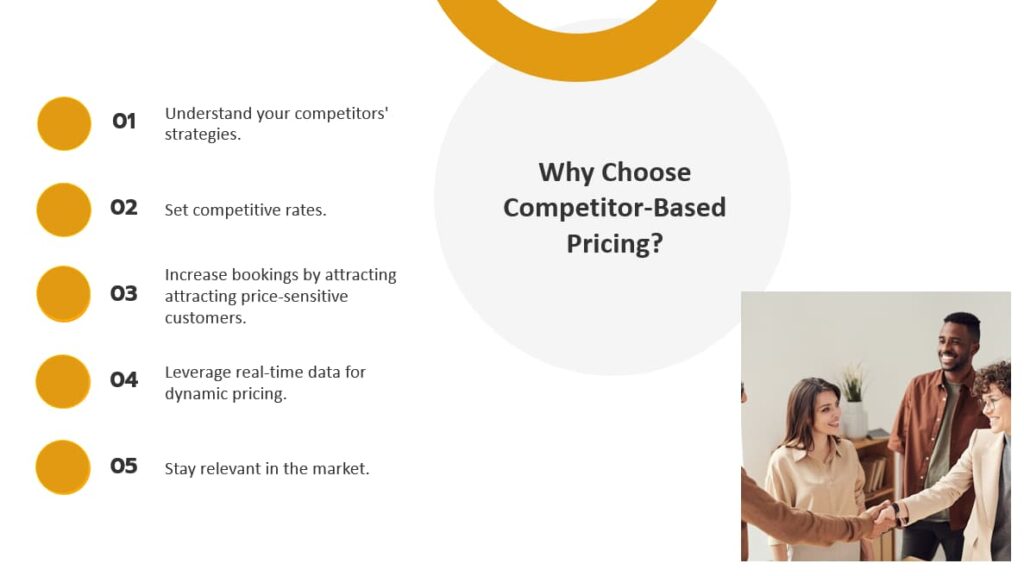
An excellent tool that can assist you in getting insight into your competitor’s pricing is Makcorps Hotel Price API.
It’s reliable as it provides real-time hotel pricing data from more than 200 online travel agencies.
To learn how you can get hotel price comparison data, watch the tutorial below:
With this API, you will get the most up-to-date information at your fingertips to make the right pricing choices.
Follow this step to implement the competitor’s pricing:
- Review the JSON data from the MakCorps API to understand competitor pricing trends.
- Adjust your hotel rates based on these insights, either lower or higher, depending on your unique offerings.
- Continuously update your data and prices to reflect market changes.
- Regularly evaluate how your pricing adjustments affect bookings and refine your strategy accordingly.
2. Projection Based Pricing Strategy
Another effective pricing strategy for hotels is to use data for projection.
By analyzing the historical hotel price data of your competitors and current market trends with the help of data analytics, hotels can make informed price predictions for their rooms.
This can involve looking at factors such as the time of year, local events, and the overall health of the economy.
By carefully considering these factors, hotels can set price positioning that is both competitive and profitable.
3. Length-Of-Stay Strategy
This pricing strategy helps hotels boost revenue by encouraging longer stays by offering different rates according to the legth of stay.
Its cost effective and easier for the hotliers because managing one seven-night booking is far more efficient than handling seven individual one-night stays.
This strategy not only fills rooms during peak periods but also smooths out demand on low-demand days.
By adjusting prices to make multi-night stays more appealing, hotels can increase occupancy, improve guest loyalty, and drive revenue while keeping labor costs low. It’s a win-win for both the hotel and the guests.
4. Rate-Parity Strategy
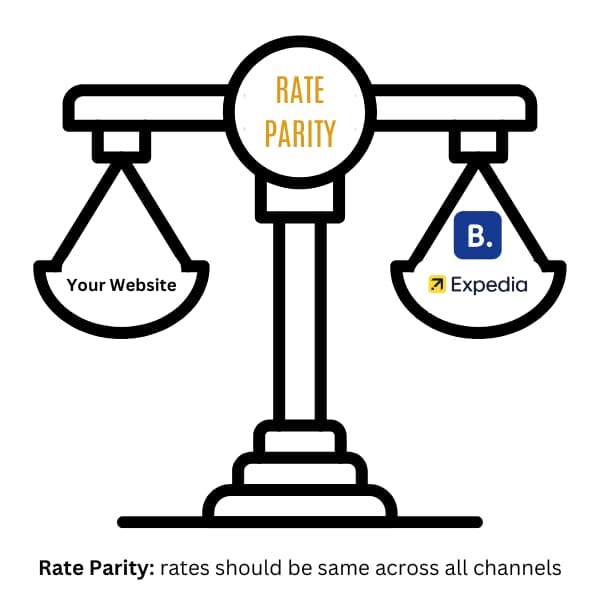
A rate-parity strategy involves ensuring that the rates for your hotel rooms are consistent across all distribution channels.
This means that the rate for a particular room type should be the same regardless of whether a guest booked directly with the hotel or through an online travel agent.
By maintaining rate parity, hotels can potentially increase their occupancy rates by winning customer’s trust.
5. Segment-Based Pricing Strategy
Hotel segment-based pricing strategies tailor room rates for different customer groups, like business travelers, families, or group events.
For example, a hotel might offer lower rates for corporate clients who book frequently, while charging premium rates during peak tourist seasons for leisure travelers.
To apply this strategy, hoteliers analyze each segment’s behavior, such as booking windows or sensitivity to price changes, and adjust accordingly.
This approach boosts revenue, optimizes occupancy, and better meets guest needs to ensure higher profitability across different market conditions.
6. Occupancy-based Pricing Strategy
Another powerful pricing strategy for hotels is to adjust rates based on the current occupancy rate. When occupancy is low, hotels may choose to lower their rates to attract more guests.
On the other hand, when occupancy is high, hotels may choose to raise their rates to capitalize on the increased demand. This approach aligns closely with Yield Management, where balancing room rates with occupancy is key to optimizing revenue.
By closely monitoring occupancy rates and adjusting pricing accordingly, hotels can potentially balance hotel revenue and profitability.
7. Loyalty-based Pricing Strategy
A further pricing strategy for hotels is to offer special rates or discounts to loyal customers.
This might involve creating a loyalty program that rewards guests for each stay or offering discounted rates to guests who have stayed at the hotel multiple times in the past.
By rewarding loyal guests, hotels can potentially encourage repeat business and achieve a competitive advantage.
8. Upselling
Upselling is a powerful rate strategy for hotels that involves encouraging guests to upgrade to a higher room category or add additional amenities to their reservations.
By offering a range of options at different price points, hotels can potentially increase their revenue and profitability. Implementing an effective upselling strategy becomes effortless for hoteliers with software solutions like Oaky which automate the process.
By segmenting customers and targeting relevant guests with personalized offers, Oaky can boost metrics like TRevPAR and RevPAR and increase the efficiency of the hotel staff while saving time and elevating the guest experience.
For example, a hotel might offer guests the option to upgrade to a suite, add on a package deal that includes tickets to local attractions, or purchase additional amenities such as in-room massages or private airport transfers.
9. Cross-Selling
Cross-selling is another efficient way of hotel price positioning that involves encouraging guests to purchase additional products or services during their stay.
This might include things like restaurant meals, spa treatments, or tickets to local attractions.
By offering a range of options at different price points, hotels can potentially increase their revenue and profitability.
10. Package Deals Pricing Strategy
By bundling together a range of products and services, such as room nights, meals, and activities, hotels can offer guests a discounted rate while still potentially increasing their overall revenue.
Package deals can be particularly effective for attracting guests who are looking for a more comprehensive vacation experience.
11. Best Available Rate Pricing Strategy
Best available rate pricing strategy (BAR) ensures fairness and competitiveness.
Hotels set their lowest, non-negotiable nightly rates, promising guests the best possible rate at any given time.
It boosts direct bookings, maintains rate integrity, and creates customer confidence, fostering both transparency and loyalty.
12. Open Pricing Strategy
Open pricing strategy allows hoteliers to set different room rates independently across various distribution channels and guest segments based on demand, without relying on uniform discounts or rate parity.
Unlike traditional pricing models, open pricing provides flexibility to optimize prices for specific groups such as corporate clients, loyalty members, or peak/off-peak customers to ensure that each segment is charged according to the current demand and willingness to pay.
This approach enhances profitability by allowing hotels to adjust rates dynamically and more accurately for each market that helps in maximizing revenue opportunities across all booking platforms.
Now that you’ve gained an understanding of hotel room rate optimization strategies for increasing bookings, it’s essential to acknowledge that pricing strategies can be significantly influenced by certain factors. To prevent any disappointment and adjust your pricing strategy effectively, let’s explore these influential elements.
Quick Glance at the Best Hotel Pricing Strategies
| Strategy | Description | Key Features/Benefits |
|---|---|---|
| 1. Competitors-Based Pricing | Adjust prices by monitoring competitors’ rates using tools like Makcorps Hotel Price API. | Real-time data, dynamic adjustments, aligns with market trends. |
| 2. Projection-Based Pricing | Use historical data and market trends (seasonality, events) to predict future pricing. | Data-driven decisions, aligns with demand fluctuations. |
| 3. Length-of-Stay Pricing | Offer discounts for longer stays (e.g., cheaper nightly rates for 7-night bookings). | Boosts occupancy, reduces operational costs, smooths demand. |
| 4. Rate-Parity Strategy | Keep room rates consistent across all channels (e.g., OTAs and direct bookings). | Builds customer trust, avoids price wars, maintains brand integrity. |
| 5. Segment-Based Pricing | Tailor prices for different customer groups (e.g., corporate vs. leisure travelers). | Maximizes revenue per segment, improves guest satisfaction. |
| 6. Occupancy-Based Pricing | Adjust prices based on current occupancy (lower rates when empty, higher when busy). | Balances revenue and demand, aligns with yield management. |
| 7. Loyalty-Based Pricing | Offer discounts or perks to repeat guests through loyalty programs. | Encourages repeat bookings, fosters guest loyalty. |
| 8. Upselling | Encourage room upgrades or add-ons (e.g., suites, spa packages) via tools like Oaky. | Boosts revenue (TRevPAR), enhances guest experience. |
| 9. Cross-Selling | Sell additional services (e.g., meals, event tickets) during bookings or stays. | Increases ancillary revenue, improves guest convenience. |
| 10. Package Deals Pricing | Bundle rooms with extras (e.g., breakfast, tours) at a discounted rate. | Attracts value-seeking guests, increases overall spend. |
| 11. Best Available Rate (BAR) | Guarantee the lowest rate for direct bookings, with no hidden discounts. | Builds trust, simplifies pricing, encourages direct reservations. |
| 12. Open Pricing Strategy | Set flexible rates across channels/segments (e.g., higher prices for corporate clients during peak demand). | Maximizes revenue per channel/group, adapts dynamically to market changes. |
Factors That Impact Hotel Rate Strategy
Operational Cost: At the core of pricing lies the need to cover operational expenses. Costs like staff salaries, maintenance, utilities, and property management systems must be factored into room rates. Pricing too low could lead to losses, while pricing too high might deter potential guests.
Market Demand: Hoteliers keenly monitor market demand. During peak seasons, high demand allows hotels to set higher prices. Conversely, during off-peak periods, discounts may be offered to entice guests. Market demand plays a pivotal role in finding the sweet spot for pricing.
Seasonal Variations: Seasonality strongly impacts pricing. For instance, ski resorts charge more in winter, while beachfront hotels thrive in the summer. Seasonal adjustments in pricing strategy are made to capitalize on the influx of visitors during specific times of the year.
Government Regulations: Government rules and regulations also shape pricing. Taxes, permits, and compliance costs can vary by location. Hotels must adhere to these regulations while ensuring that the added expenses are reflected in their pricing structure.
Unpredictable Events: Hotels are most vulnerable to unpredictable events such as natural disasters, economic crises, or health pandemics. These events can disrupt travel patterns and force hotels to reevaluate their pricing strategies in real time.
Now, it’s time to unlock the right way to implement hotel pricing strategies for best results.
How To Price a Hotel Room: A Comprehensive Guide to Increasing Your Rates
Market Research: Analyze your competitors and target audience to understand pricing trends and guest preferences.
Cost Evaluation: Calculate your operational costs and perform a detailed hotel room cost breakdown to determine the minimum rate needed to cover expenses. You can use the Hotel Room Pricing Calculator to determine the minimum rate needed to cover expenses while achieving your desired profit margin.
Seasonal Adjustments: Set different prices for peak and off-peak seasons to optimize revenue.
Dynamic Pricing: Use data analytics to adjust dynamic hotel prices in real time based on demand, occupancy rates, and market conditions.
Online Distribution: Utilize online travel agencies (OTAs) and your hotel website to reach a wider audience and manage pricing effectively.
Promotions and Packages: Create attractive promotions, bundles, or loyalty programs to incentivize bookings.
Monitor and Adapt: Continuously monitor your strategy’s performance and be ready to adapt to changing market dynamics.
Conclusion:
Powerful hotel pricing strategies can help to increase occupancy rates and boost revenue.
By tracking competitor rates, and hotel price trends, future demand, offering incentives and discounts hotels can effectively set prices that are both competitive and profitable.
Additionally, strategies such as upselling, cross-selling, and offering package deals can help hotels to maximize their revenue per guest.
By carefully considering these room rate optimization strategies hotels can effectively increase their bookings and drive growth.
Frequently Asked Questions By Hoteliers:
Which Methods Of Pricing Are Commonly Used In The Hospitality Industry?
There are many different methods of pricing that are commonly used in the hospitality industry, including – Competitor-based pricing, forecasting-based pricing, Length-of-stay pricing, and much more.
You can choose either a singular or a mixture of different pricing strategies as per your business need and advantage.
